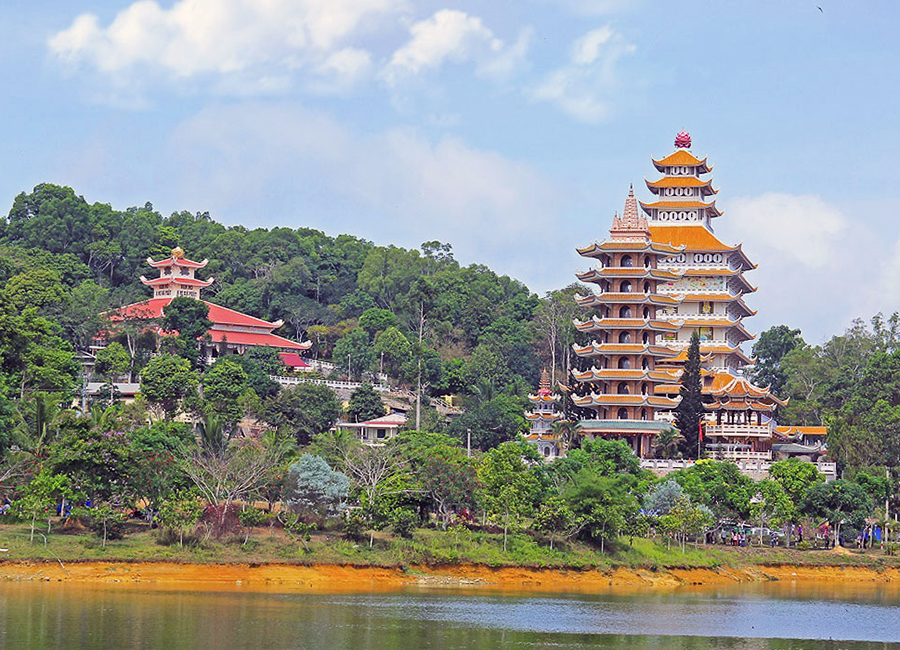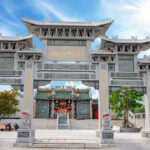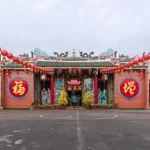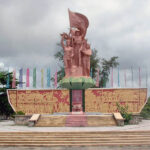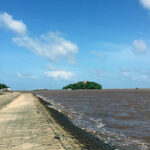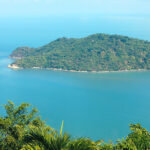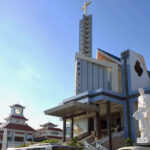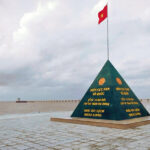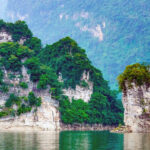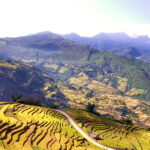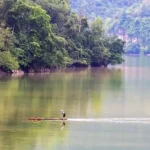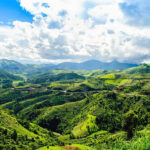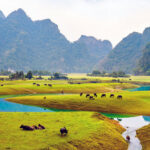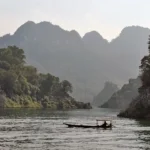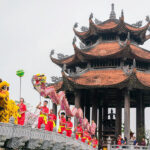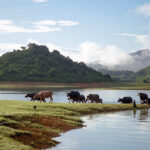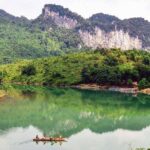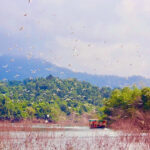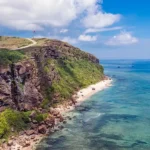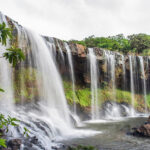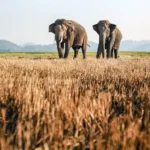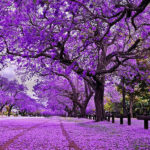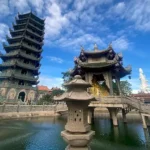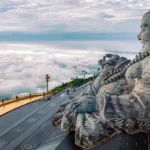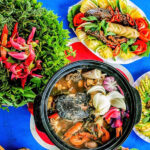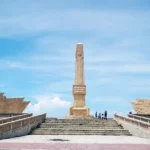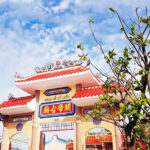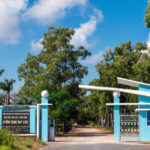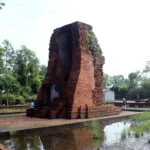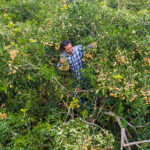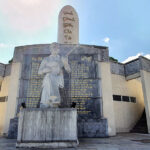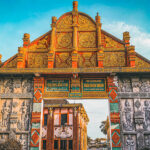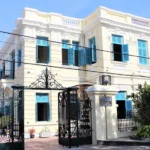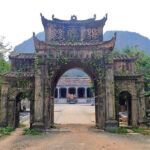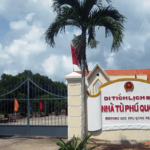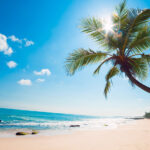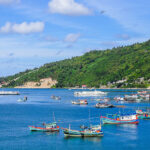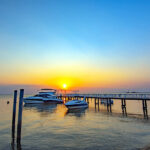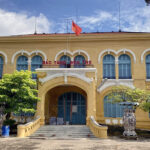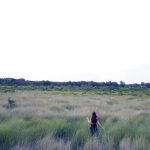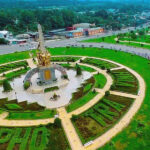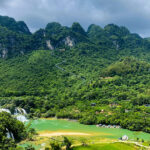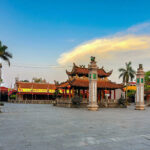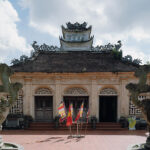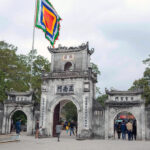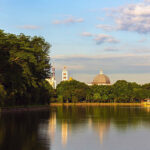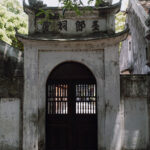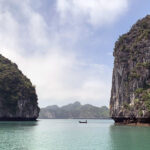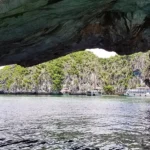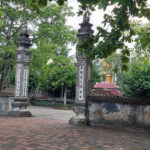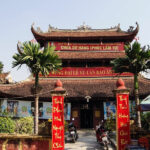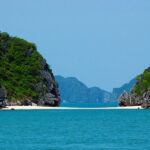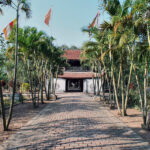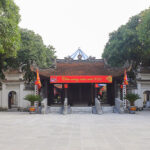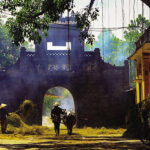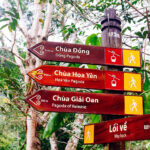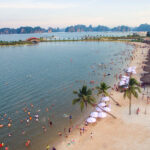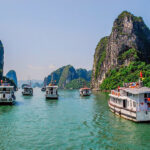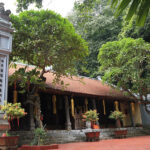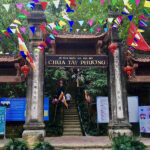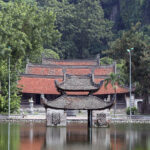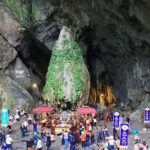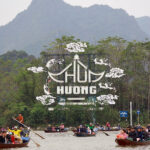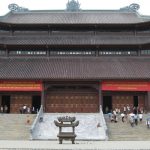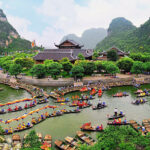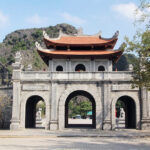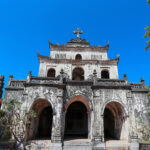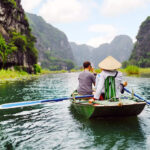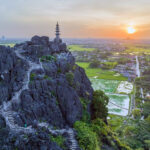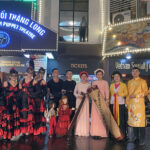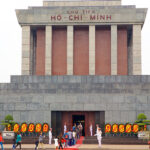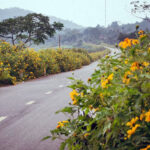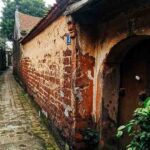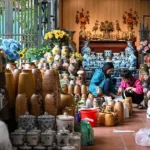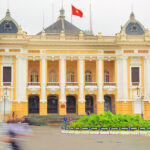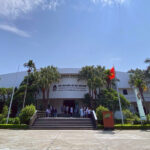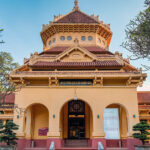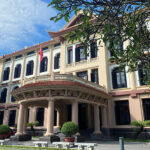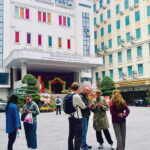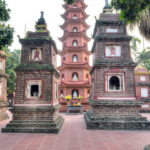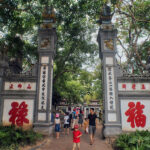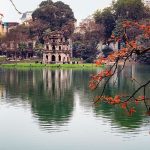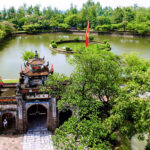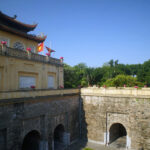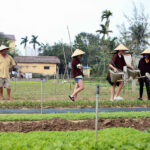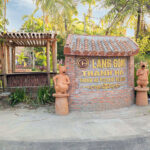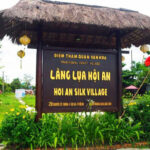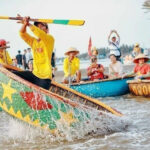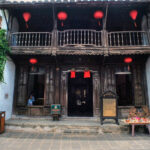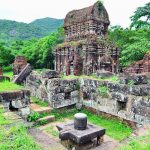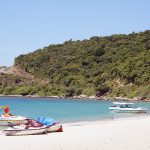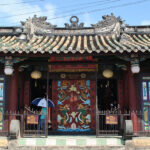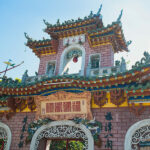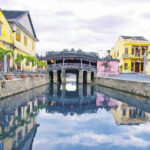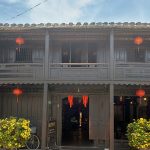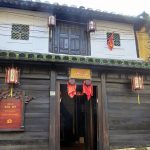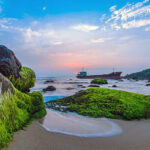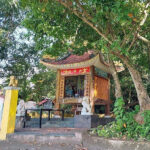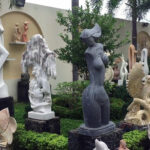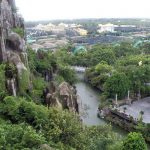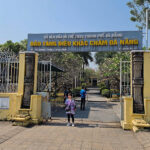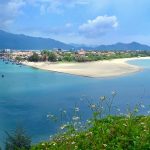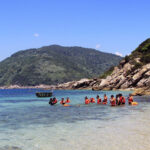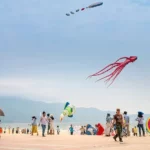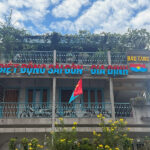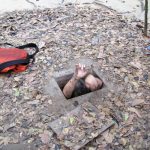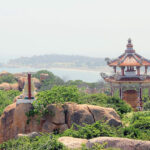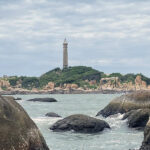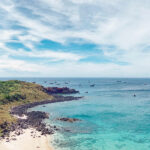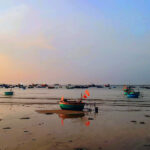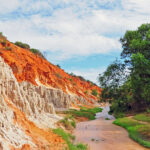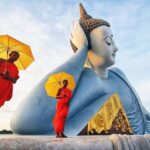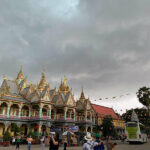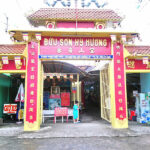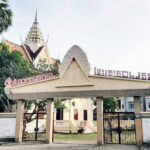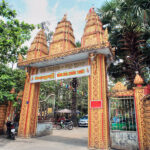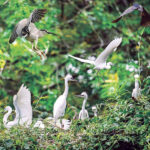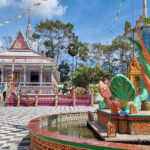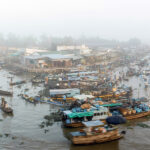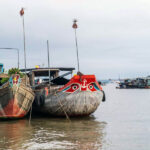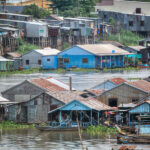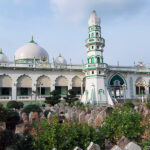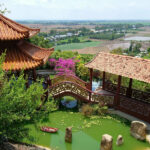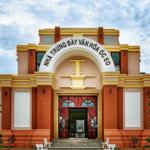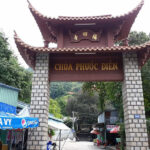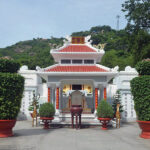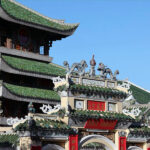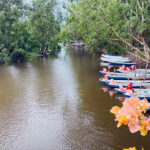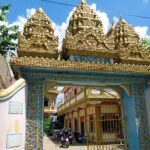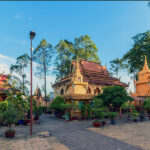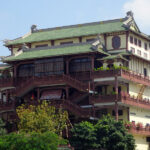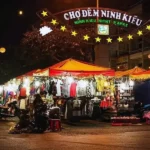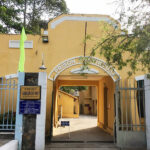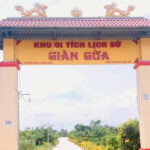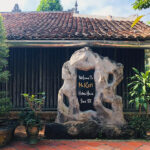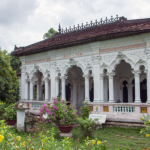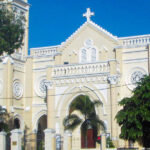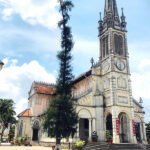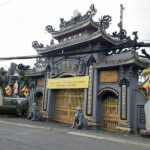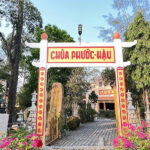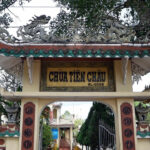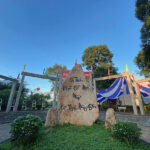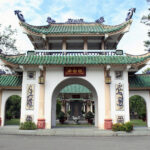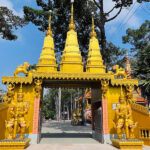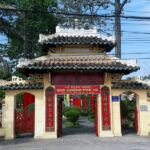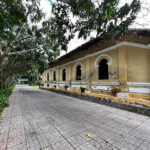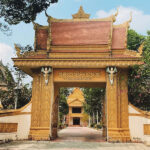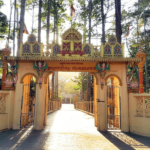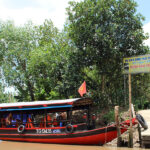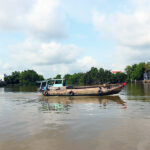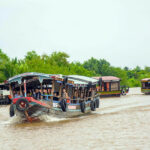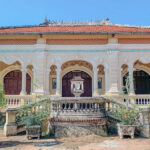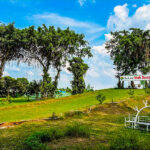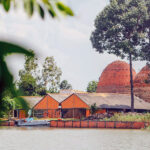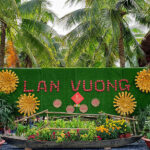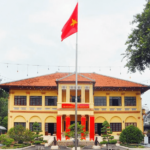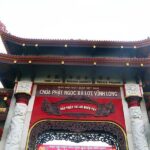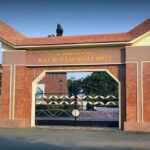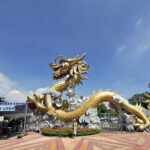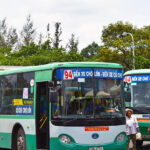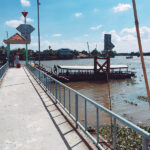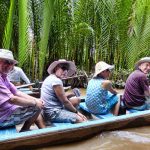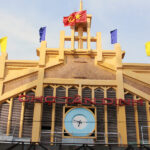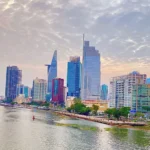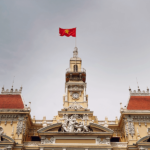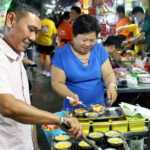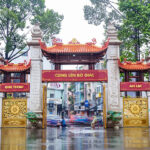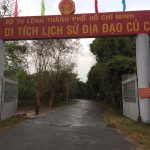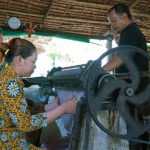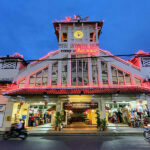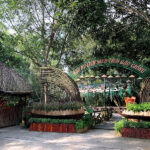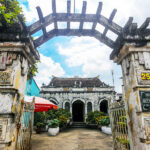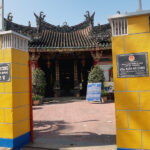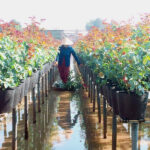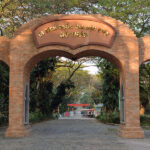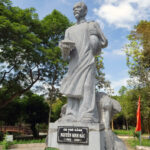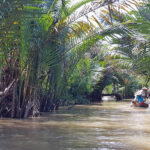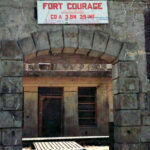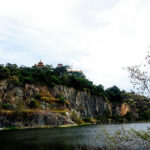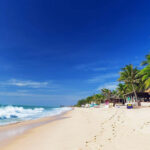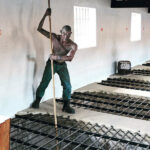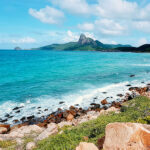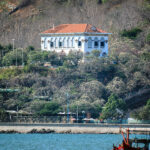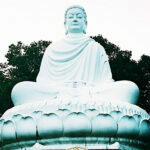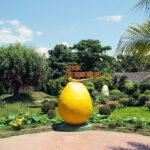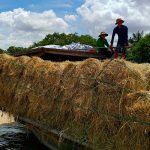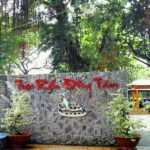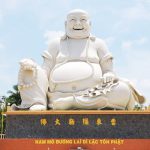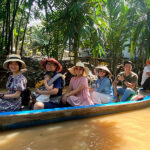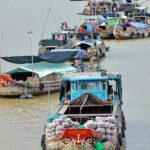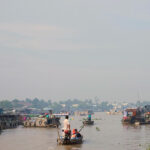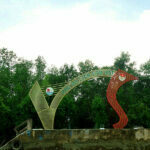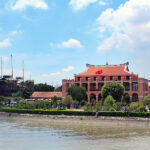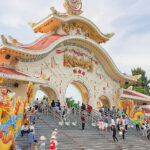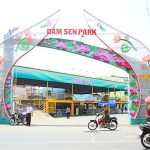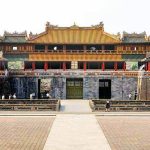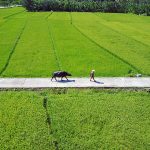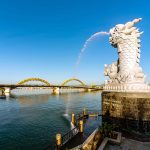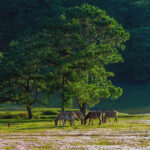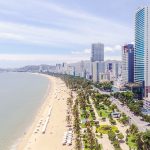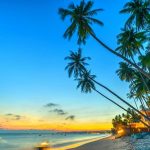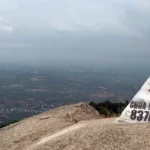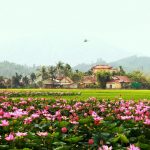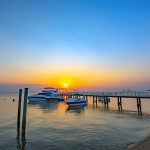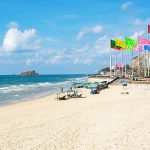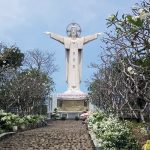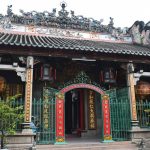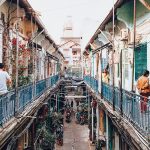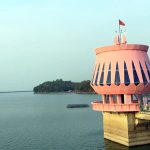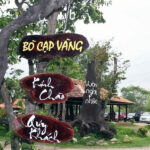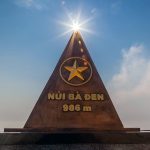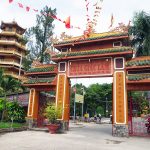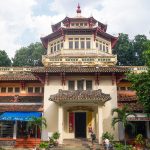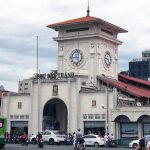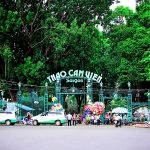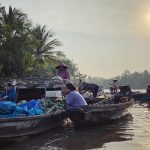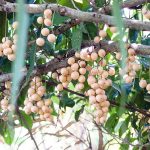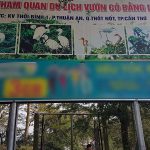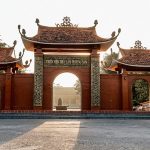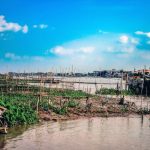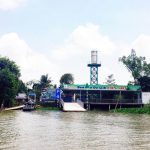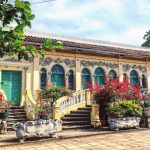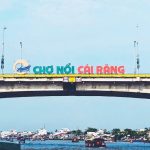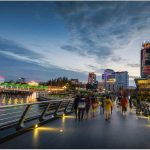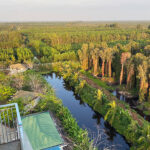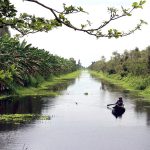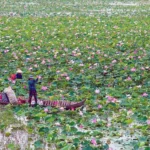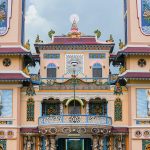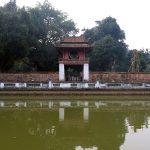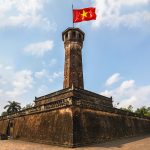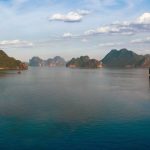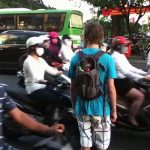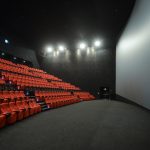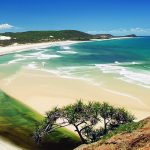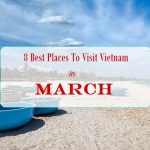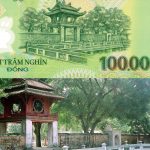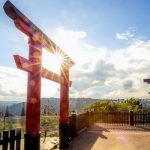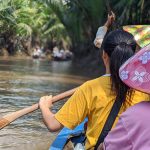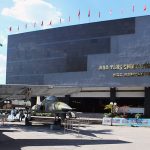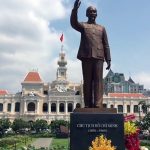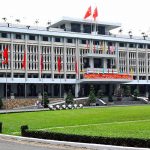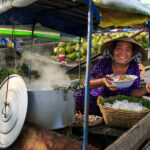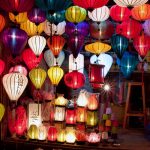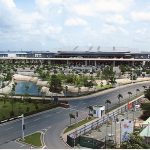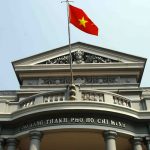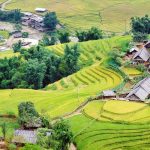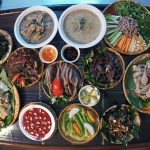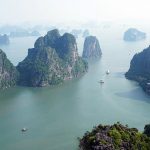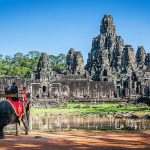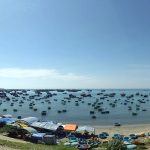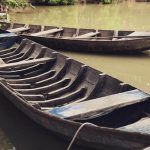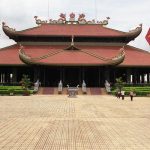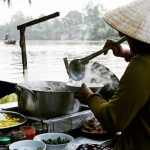Located right next to the fertile Mekong River, nature has endowed An Giang with many favorable conditions not only for agricultural development but also promoting ecotourism. Coming here, visitors will enjoy a peaceful vacation with the fresh air, experience the rustic life of the people of the water. An Giang strongly impresses visitors by the idyllic beauty of the Mekong Delta river region, where there is a mixture and convergence of many unique cultures of the Kinh, Khmer, Cham, Chinese communities, and the best beaches in Phu Quoc, Nam Du…. Not only visiting ecotourism areas but also enjoying rich and rustic cuisine, promises to bring you interesting experiences when explore An Giang.
Table of Contents
General information about An Giang
An Giang is a province in the Mekong Delta region, located in the southwest of Vietnam. In 2025, Kien Giang was emerged with An Giang created a total area about 9,888 km². An Giang borders Cambodia to the north, Dong Thap province to the east, Ca Mau province to the west and Can Tho to the south.
What is the best time to explore An Giang?
From March to May, An Giang is in the dry season. If you want to see the duckweed carpet as well as the green natural world in Tra Su Melaleuca forest during flood season, you should go in October and November. From late November to early December, you can admire the ripe rice fields during harvest season.
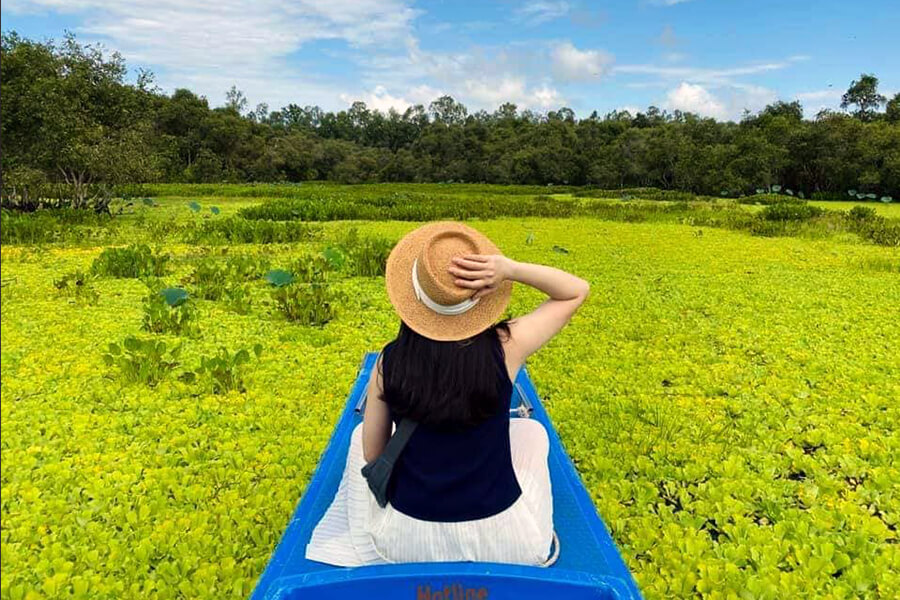
In April or August of the lunar calendar, two major festivals take place, including the Ba Chua Xu Festival of Sam Mountain (April 23 – 27 of the lunar calendar) and the bull racing festival at the end of August. The months of July – August have quite a bit of rain therefore, you should bring an umbrella and appropriate clothing.
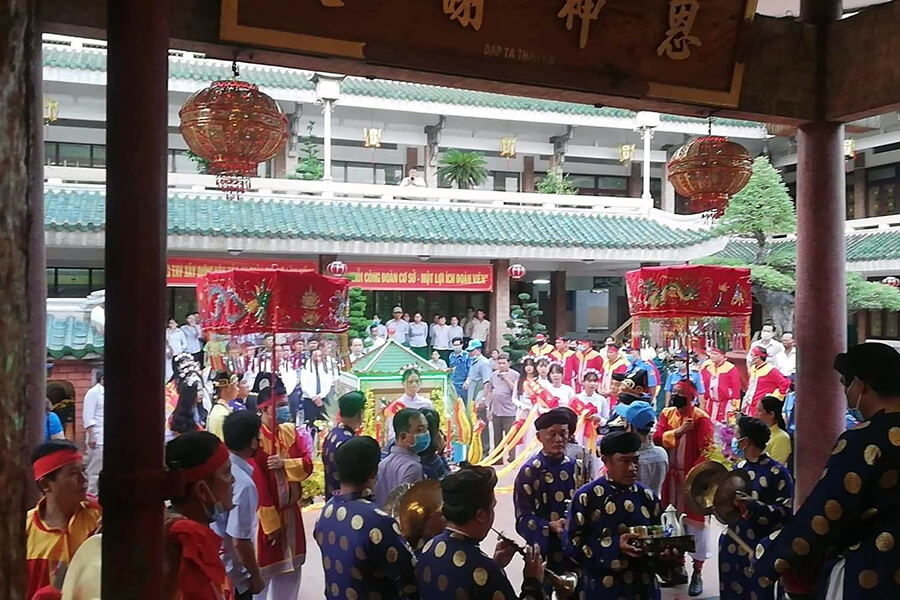
According to Vietdreamtravel’s experience, the time from November to April is ideal time for outdoor activities. This is the dry season with cool weather and warm sunshine.
How to get here?
By road
Road is the main form of transportation to An Giang. From Ho Chi Minh City, visitors often depart from Mien Tay (Western Bus) bus station. One-way fares range from 200,000 VND to 350,000 VND depending on the type of bus, vehicle quality and destination. Recommended bus companies: Kumho Samco, Phuong Trang (Futa), Thien Thanh limousine, Hue Nghia, Tuan Nga, Tu Tien, Hien Van, Hoang Minh…
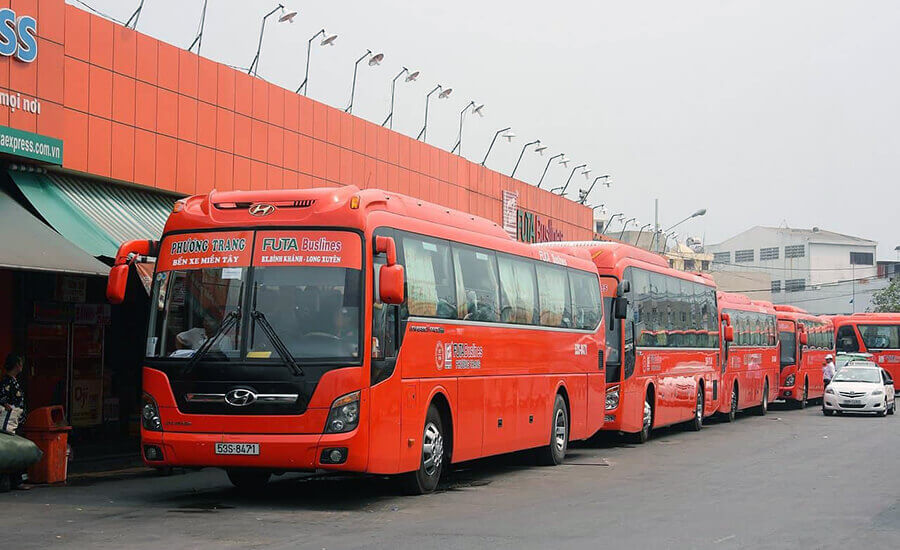
Phuong Trang (Futa) – one of a popular bus to An Giang.
Visitors also can rent private car to An Giang to be proactive about the route and freely admire the beauty along the way to get here.
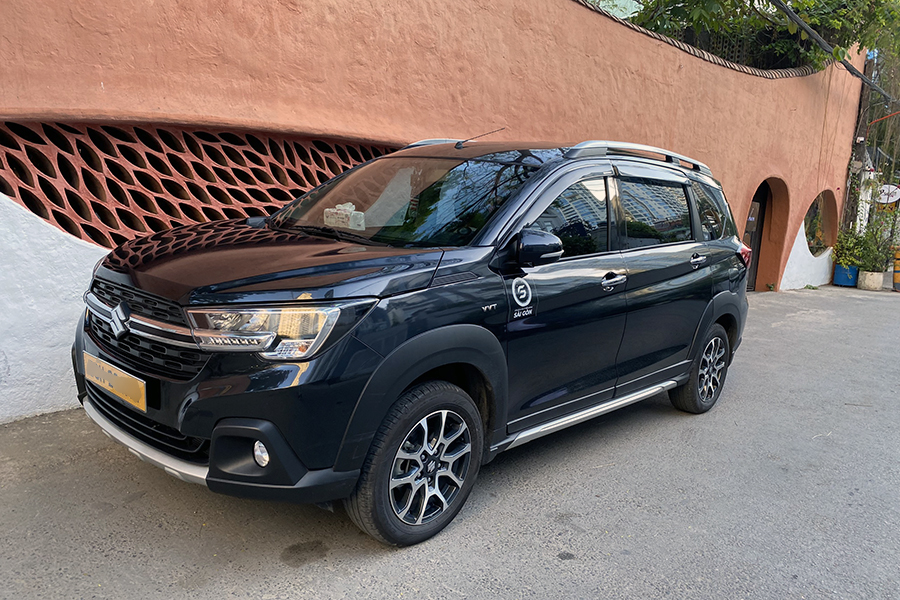
By air
An Giang has Phu Quoc which is an international airport, and receives all types of aircraft. There are dozens of flights to and from Phu Quoc airport every day.
By sea
To visit islands such as Phu Quoc and Nam Du, visitors can take a speedboat from Rach Gia or Ha Tien. Reputable shipping companies include Superdong and Phu Quoc Express with ticket prices ranging from 100,000 – 400,000 VND.
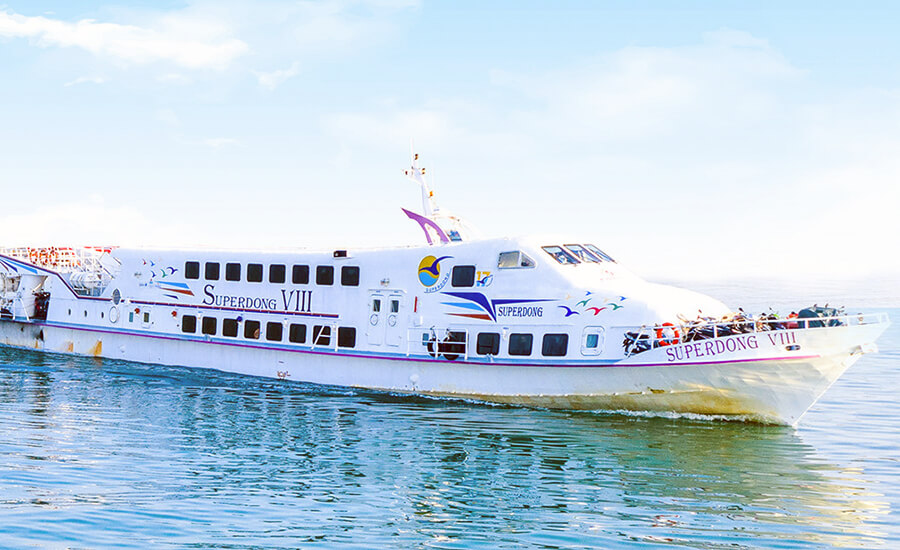
Supper Dong speed boat – a regular boat to Phu Quoc, Ha Tien, Rach Gia…
Where to stay in An Giang?
Hotels and motels in mainland An Giang are mainly concentrated in Sam Mountain, Chau Doc, Long Xuyen market, Ha Tien and Rach Gia areas. Hotels and motels in the Sam Mountain area are quite expensive, usually only pilgrims stay. If you travel, you should stay in the Chau Doc market area, for convenient access to attractions during the day as well as entertainment and dining in the evening while your trip to explore An Giang.
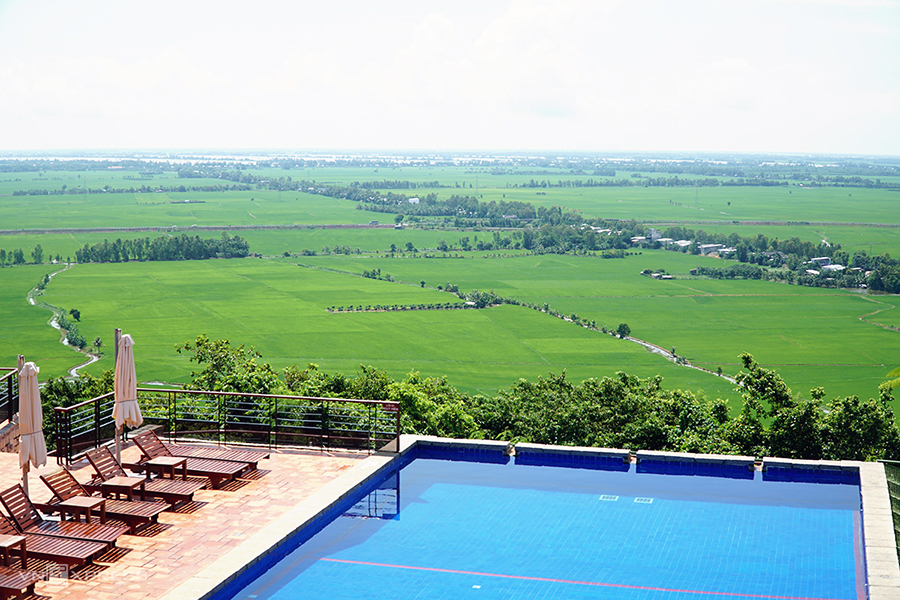
When come to explore Phu Quoc and other islands, there are many different types of accommodation. High-end hotels with room rates ranging from 1,5 – 2 million VND per night; 2-3 star hotels with room rates from 800,000 VND to 1,000,000 VND and budget accommodation costs less than 500,000 VND.
Tourist attractions in An Giang
Beautiful attractions in An Giang are far apart. The following are suggested destinations for visitors to explore An Giang.
Famous islands and the best beaches
Phu Quoc Island
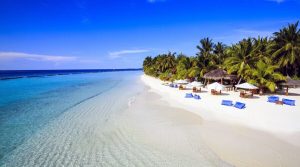 Referring to An Giang, people immediately think of Phu Quoc. This is the largest island in Vietnam, famous for its beautiful beaches, primeval forests, and precious historical relics. Phu Quoc is blessed with a harmonious landscape, a pleasant climate all year round, and fresh seafood. Therefore, it not only attracts a large number of domestic tourists but also foreigners.
Referring to An Giang, people immediately think of Phu Quoc. This is the largest island in Vietnam, famous for its beautiful beaches, primeval forests, and precious historical relics. Phu Quoc is blessed with a harmonious landscape, a pleasant climate all year round, and fresh seafood. Therefore, it not only attracts a large number of domestic tourists but also foreigners.
Phu Quoc has many beautiful beaches stretching from the North to the South such as Bai Truong, Bai Sao, Bai Khem, Bai Dai … In the North, you can visit Mong Tay islet, Doi Moi island, Ban island, Thay Boi island … In the South, there are 12 islands belonging to An Thoi archipelago … There are many interesting entertainment activities for Phu Quoc tourists such as fishing, diving to see coral…. Phu Quoc not only has the sea but also is a place to learn about historical and cultural relics, customs, habits of islanders, traditional craft villages … or explore the joyful life in the fishing village of local people.
Nam Du Island
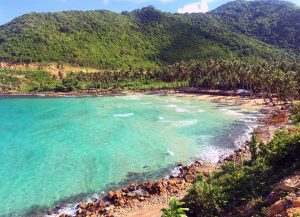 The Nam Du island is located in the Southeast of Phu Quoc Island in Kien Hai, An Giang. Nam Du Archipelago consists of 21 islands, large and small, creating a wonderful landscape in the middle of the Gulf of Thailand. The picturesque beauty together with the clear blue water, the peaceful and dreamy scenery here has made many people fall in love with every opportunity to travel to An Giang.
The Nam Du island is located in the Southeast of Phu Quoc Island in Kien Hai, An Giang. Nam Du Archipelago consists of 21 islands, large and small, creating a wonderful landscape in the middle of the Gulf of Thailand. The picturesque beauty together with the clear blue water, the peaceful and dreamy scenery here has made many people fall in love with every opportunity to travel to An Giang.
The first thing that travelers think about this island is immersed in the crystal clear blue water. There are many beautiful and famous beaches here such as Me beach, Dat Do beach…in Hon Lon island with curved coconut trees shading on the white sand and clear seawater. In addition to the wonderful beauty of nature, Nam Du Island also possesses many types of local products, along with very cheap and fresh seafood.
Coming to Nam Du, tourists enjoy the quiet space, enjoy diving and swim, learn about fishing in cages on the sea and experience the life of a true fisherman in this archipelago with many amazing things.
Son Island
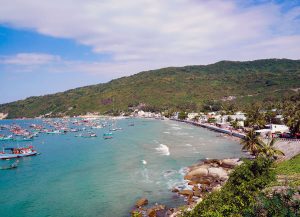 Son island is located between Nam Du Island and Hon Tre Island. This island is considered one of the most pristine and charming islands in the An Giang sea. Covered by immense coconut palms running along the coast with a wild look, there is no trace of discovery. Traveling to Son island, in addition, to relax at the beaches: Bang beach, Nha beach, Thien Tue beach, and Bac beach.
Son island is located between Nam Du Island and Hon Tre Island. This island is considered one of the most pristine and charming islands in the An Giang sea. Covered by immense coconut palms running along the coast with a wild look, there is no trace of discovery. Traveling to Son island, in addition, to relax at the beaches: Bang beach, Nha beach, Thien Tue beach, and Bac beach.
You can also snorkel on the coral reef between Da Bang and Doc Ba Tang. With romantic scenery, this island is ideal for those who like to get up early to watch the sunrise or admire the sunset in the late afternoon. Son island also has Than Lai Son communal house, Ba Chu temple, Cao Dai shrine, Hai Son pagoda, Pho Tinh pagoda, … are all located in Bai Nha, which is quite convenient for sightseeing taking pictures.
Hai Tac Island
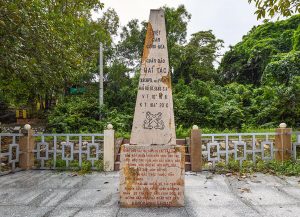
Hai Tac (Pirate) archipelago belongs to Tien Hai commune, located nearly 28 km outside of the mainland. At the end of the 17th century – early 18th century, the Ha Tien archipelago was located on an important trade route of many countries. With the dangerous terrain, this area became an ideal place for pirates to hide, ambush and attack passing merchant ships.
Although not as famous as Phu Quoc and Nam Du but Hai Tac Island is loved by tourists for its wild scenery and experiences of fishing village life. Hai Tac Island does not have many wide beaches, smooth white sand like Phu Quoc, but the beach here is very clean and pristine. Dua beach in Hai Tac Island is the most famous beach, a destination loved by locals and tourists. You can comfortably swim, roam or rent sea glasses to go snorkeling, catch crabs, snails around the cliffs.
Phu Tu (Father and Child) Islet
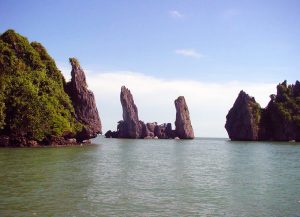 Phu Tu scenic area in Kien Luong commune has poetic scenery and is an attractive destination for tourists everywhere. Located on the west coast, more than 35km from old Ha Tien and 70km from Rach Gia, Phu Tu islet is a natural complex including caves, rocky mountains, and beaches like Ha Long Bay in South Vietnam.
Phu Tu scenic area in Kien Luong commune has poetic scenery and is an attractive destination for tourists everywhere. Located on the west coast, more than 35km from old Ha Tien and 70km from Rach Gia, Phu Tu islet is a natural complex including caves, rocky mountains, and beaches like Ha Long Bay in South Vietnam.
Tourists visit this tourist destination not only because of its charming young beauty but also want their children or themselves to have a few minutes to reflect on the noble and beautiful father-son love through the legend of Phu Tu islet. Before “crossing” to the sea to visit Phu Tu islet, a tourist destination that cannot be missed is Hang Pagoda. This particular temple is located mostly in a mountain cave, has a narrow entrance, must be inserted through the cliff to enter. When going deep inside, visitors are attracted to the jelly blocks, ribbed rock, unique shapes …
Ba Lua archipelago
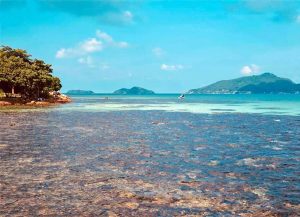
Located in the waters of An Giang, which owns many beautiful and famous islands, beaches, but the Ba Lua archipelago (in Kien Luong Commune) makes visitors fascinated by its rustic, simple, and interesting features amazed. When traveling to Ba Lua Island, the most frequent visitors come to Lon (Large) Island, Duong island, and Gieng island, forming the famous Ba Hon Dam cluster. The sea here is shallow and gentle, so visitors can walk from one island to another when the water level is low, to explore the scenery as well as the sincere life of the fishermen. This is an interesting experience, both creating a sense of curiosity but also mixed with an interesting thrill that visitors may not have experienced in any other tourist destination. Under the immense sea, visitors can relax, have fun with friends, soak in cool water or experience the pleasure of hunting seafood with clams, snails … like fishermen exactly.
Tre Island
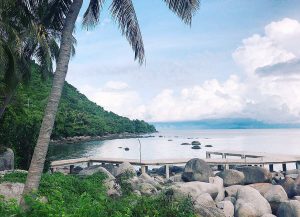 Compared to other popular islands, Tre (Bamboo) island is somewhat inferior in popularity, but that does not mean the island is not beautiful. On the contrary, those who like to admire the beautiful, unspoiled scenery, admire many vertical rocks, extremely clear blue sea water … must come to this island at least once.
Compared to other popular islands, Tre (Bamboo) island is somewhat inferior in popularity, but that does not mean the island is not beautiful. On the contrary, those who like to admire the beautiful, unspoiled scenery, admire many vertical rocks, extremely clear blue sea water … must come to this island at least once.
Tre island commune is the administrative center of Kien Hai, located closest to the shore compared to Nam Du and Son island. With a relatively modest total area of less than 500km², but possessing a variety of beauty, including forests, mountains, sea islands, … and many kinds of fresh seafood will keep visitors when coming to the island. The coast around the island has a winding shape with many stretches of natural rock … Especially the fruits grown here are much better than the mainland.
Tho Chu Island
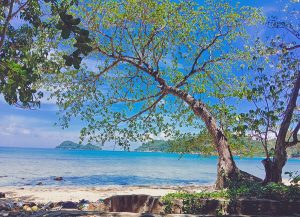 Tho Chu Archipelago is a frontier island border on the southwest sea of the country in Phu Quoc, An Giang province where not everyone knows it. But because of little attention, this island still retains the wild features of nature.
Tho Chu Archipelago is a frontier island border on the southwest sea of the country in Phu Quoc, An Giang province where not everyone knows it. But because of little attention, this island still retains the wild features of nature.
Tho Chu Island, is 100km from Phu Quoc and 220km southwest of Rach Gia, so coming to Tho Chu Island is quite difficult. Tho Chu Island is a place that plays an important role in the military, so it is strictly managed by the border forces, it is necessary to comply with the regulations when visiting.
The beautiful scenery of the Tho Chu archipelago is really untouchable: white sandy beaches, clear blue water, charming coconut trees, colorful coral reefs, rich seafood … Although the journey to Tho Chu is still quite hard, but surely the island will bring many surprises.
An Thoi archipelago
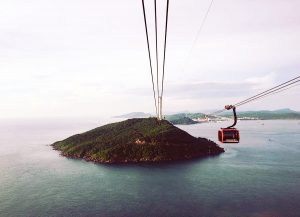 An Thoi is an archipelago located in the south of Phu Quoc pearl island, located in the Gulf of Thailand. It is about 38 km from the central town, includes 15 islands that make up a population In which only 3 islands are inhabited. They are Thom, Ray and May Rut islands. However, the residents here are not too crowded either. Thanks to that, the Thoi An archipelago of Phu Quoc still retains its rare and wild beauty.
An Thoi is an archipelago located in the south of Phu Quoc pearl island, located in the Gulf of Thailand. It is about 38 km from the central town, includes 15 islands that make up a population In which only 3 islands are inhabited. They are Thom, Ray and May Rut islands. However, the residents here are not too crowded either. Thanks to that, the Thoi An archipelago of Phu Quoc still retains its rare and wild beauty.
This archipelago contains a chain of small islands lying adjacent to each other. Because there is not too much influence from human hands, it still has a very natural and beautiful landscape. With the turquoise-like blue sea, the long white sand glittering in the sunlight, creating a poetic, lyrical, and extremely peaceful scene.
Can be compared here the green pearls of Phu Quoc, Thoi An archipelago Phu Quoc becomes an irresistible destination for tourists from near and far.
Not only known as a paradise on earth. Visitors coming will experience many new entertainment activities and entertainment. For example, you can experience services such as scuba diving, watching coral, visiting cable cars, squid fishing at night, …
Ong Ho (Tiger) Islet
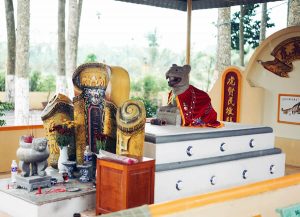
Ong Ho Islet, located in My Hoa Hung commune, An Giang province. There is a memorial area for President Ton Duc Thang (Uncle Ton’s hometown), one of 23 Vietnamese monuments classified as a special national monument.
The local people of this island explain that in the past this was a region of rushes and reeds. There were two old peasant husband and wife living on the island (today it is My Hoa Hung commune). One day, they rowed in canoes to collect firewood; on the way returned, they found a tiger cub was both hungry and cold, and brought it home to take care of it. When growing up, the tiger was very gentle. When they died, the tiger also went to the forest. Every year, on the anniversary of their grandparents’ death, tigers brought in a wild boar and placed beside the grave and leave. The villagers were touched so they named the island: Ong Ho.
Coming to Ong Ho islet, in addition to visiting the monuments, you can enjoy the taste of life in the Mekong region, and can also experience life with the people here. You can stay with the local people, experience farming, fishing on canals; experience the craft of forging, carpentry, and mat weaving; cycling to visit the island, take a boat on the canals, visit the fish raft, and enjoy the taste of various fruits, specialty meals and listen to artists songs, and music.
Scared temples and pagodas
Temple of Lady Chua Xu
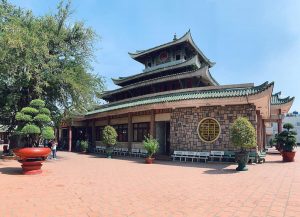
The temple of Lady Chua Xu is perhaps the most famous landmark of An Giang. This is a famous sacred temple that attracts millions of people from all over the world to visit every year. The temply of Lady Chua Xu is located at the foot of Sam mountain in Vinh Te ward, An Giang. The temple has many mystical legends which are passed down from generation to generation. But according to the French archaeologist Malleret researched in 1941, the statue of Lady Chua Xu belongs to the type of god Vishnu (male god), carved of a thoughtful, noble man with high artistic value. The statue was artistically carved of grey stone in the late 6th century. In 2009, the Lady Chua Xu statue was inscribed in the An Giang Book of Records as the oldest sandstone statue that has worshiped robe.
The main festival takes place on April 25 of the lunar calendar, it is called the “Hoi Via Ba”. Thousands of people come to the festival to attend the washing of the statue, to burn joss sticks, offer followers, foods…to pray to Lady Chua Xu. On December 19, 2014, the Lady Chua Xu Festival was included in the list of national intangible cultural heritage by the Ministry of Culture – Sports and Tourism.
Tay An Pagoda
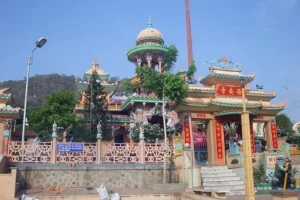
Tay An Pagoda is located at the foot of Sam Mountain (Vinh Te ward) built in 1847, with the appearance of an Indian architectural work. Tay An Pagoda was ranked as a National Architectural and Artistic Monument on July 10, 1980. Later, this pagoda was also recognized by the Vietnam Record Book Center as the first pagoda combining Indian artistic architectural style and ancient ethnic architecture in Vietnam.
Every year, Tay An Pagoda has main holidays: the full moon day of January, the full moon day of October and the 12th day of the 8th lunar month. On those holidays and the festival months of Sam Mountain and Chau Doc (from January to the end of the fourth lunar month every year), pilgrims from all over come to the pagoda in large numbers to worship.
Nguyen Trung Truc Temple
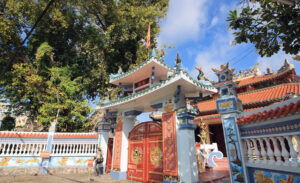 Located right in the center of Rach Gia, Nguyen Trung Truc Temple is a destination not to be missed when coming to An Giang. This is the largest temple of the nine temples of Nguyen Trung Truc, the hero who led the resistance war against the French in the South.
Located right in the center of Rach Gia, Nguyen Trung Truc Temple is a destination not to be missed when coming to An Giang. This is the largest temple of the nine temples of Nguyen Trung Truc, the hero who led the resistance war against the French in the South.
Every year, in the 8th lunar month, the big festival at the temple attracts thousands of visitors from all over to attend, immerse themselves in the cultural space and honor the national hero. The temple is open daily from 7am to 5pm, bringing a solemn space full of historical significance.
Hang Pagoda
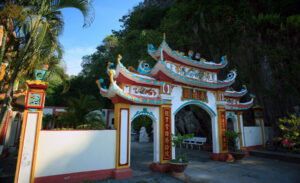 Hang Pagoda, also known as Hai Son Pagoda, located at the foot of An Hai Son Mountain in Kien Luong, is an ancient and sacred pagoda. The special thing about Hang Pagoda is its unique location, deep inside a natural cave, creating a pure and mysterious space.
Hang Pagoda, also known as Hai Son Pagoda, located at the foot of An Hai Son Mountain in Kien Luong, is an ancient and sacred pagoda. The special thing about Hang Pagoda is its unique location, deep inside a natural cave, creating a pure and mysterious space.
Entering the temple, visitors will feel the peace, their souls are purified by the fresh, cool air from nature. This is a spiritual destination that attracts many visitors to burn incense, pray and admire the beautiful scenery of mountains.
Unique unique architecture works
Tomb of Thoai Ngoc Hau
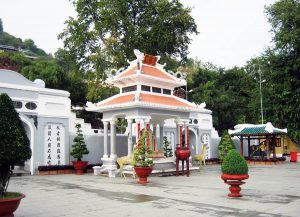 The Thoai Ngoc Hau tomb, also known as Son Lang, is located on a high platform, leaning against Sam mountain, opposite Lady Chua Xu Temple. This is a resting place of Thoai Ngoc Hau, a mandarin of the Nguyen Dynasty, and his wives. He was a famous mandarin who directed the digging the Vinh Te and Thoai Ha canals and contributed greatly to the reclamation of the lands south-west of Vietnam.
The Thoai Ngoc Hau tomb, also known as Son Lang, is located on a high platform, leaning against Sam mountain, opposite Lady Chua Xu Temple. This is a resting place of Thoai Ngoc Hau, a mandarin of the Nguyen Dynasty, and his wives. He was a famous mandarin who directed the digging the Vinh Te and Thoai Ha canals and contributed greatly to the reclamation of the lands south-west of Vietnam.
The tomb area has a harmonius architecture style of Nguyen dynasty. He buried his second wife Truong Thi Miet there in 1821 and his first wife Chau Thi Te in 1826. He also reserved a portion for himself between the two tombs of his wives.
Its charm and magnificence is well preserved. It’s an architecural construction of great historical significance.
With its precious values, Thoai Ngoc Hau tomb was recognized as a National Historical and Cultural Monument in 1997, which is now one of key destinations in the Sam Mountain Cultural and Historical Site.
Mac Cuu Tomb
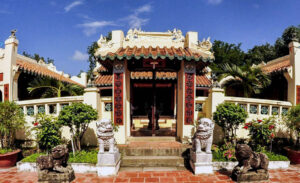 Mac Cuu Tomb is located on Binh San Mountain, the resting place of Mac Cuu and his family, who had contributed to the development of the ancient Ha Tien land. This is an important historical site of An Giang, attracting many tourists to visit and learn about the history of the formation and development of this land.
Mac Cuu Tomb is located on Binh San Mountain, the resting place of Mac Cuu and his family, who had contributed to the development of the ancient Ha Tien land. This is an important historical site of An Giang, attracting many tourists to visit and learn about the history of the formation and development of this land.
The tomb was elaborately built, including temples and mausoleums of the Mac family. Coming here, you can not only admire the ancient architecture but also deeply feel a part of the heroic history of Ha Tien land.
Tourist areas
Sam mountain tourist area
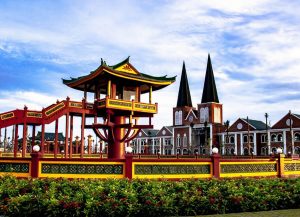
Sam mountain has another name, Vinh Te Son or Ngoc Lanh Son, 284 m high with a circumference of 5,200 m. It was formerly in Vinh Te commune, An Giang province.
On the Sam mountain, there are many temples and shrines, the most famous of which are Ba Chua Xu Temple, Tay An Temple, Thoai Ngoc Hau tomb, Phuoc Dien Pagoda (also known as Hang Pagoda) are the items in the historic site. Sam mountain has been recognized by the Ministry of Culture, Sports and Tourism of Vietnam as a national monument.
Cam (Forbidden) Mountain
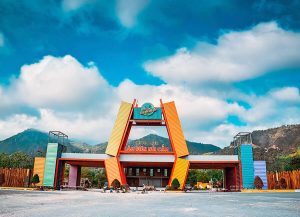
This is the highest mountain in the Bay Nui (7 mountains) region, with an altitude of 700m above sea level, conquering Cam mountain by trecking is a great experience. From the top of the mountain, you can enjoy a panoramic view of vast rice fields stretching to the Ha Tien sea and the southwestern border. Cam Mountain is a tourist attraction in An Giang province attract visitors not only by a majestic appearance but also cool and fresh with lush green trees, especially in the spring. It is also famous for many peaks of different heights with different name, such as Bo Hong, Ong Buom, Thien Tue, Dau and Ba. Each of them is associated with a legend and has difference meaning. This mountain also has many temples, and shrines. The most notably is Van Linh pagoda, Phat Lon, Phat Nho and Trung Son Thien Tu Pagodas. In addition, along the trails from the foot to the top of the mountain, there are many attractions such as Thanh Long stream, Tien stream, Cay Que Temples, Thuy Liem cave, The cave, Tiger cave…. A must-see attraction is the 33.60m-high statue of Mitreya, the highest Mitreya statue in Southeast Asia. It is placed in a 20ha area of green trees, facing the Phat Lon and Van Linh Pagodas.
Today, you can visit Cam mountain by cable car which has been completed and put into service to tourists from February 14, 2015.
Tra Su Melaleuca Forest
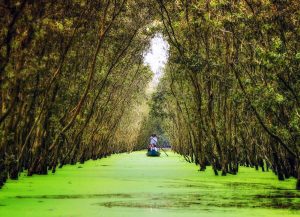
Tra Su Melaleuca forest is located in Tinh Bien ward, about 20km from Chau Doc. This is an ideal destination for a weekend break. Tra Su Melaleuca forest is the most famous mangrove forest in Mekong Delta river, which is considered a unique tourist landscape when referring to An Giang land. In addition to the natural scenery of the mangrove forest, it is also home to many valuable fauna and flora species. There are more than 70 species of birds, storks, of which two species are named in the “Red Book of Vietnam”, the painted stork and oriental darter.
Another interesting to do in this forest is experiencing the trip on a canoe and dropping into nature. Also, the best time to visit Tra Su forest is from September to November, this is the season when the level of water is raising up covers the mangroves creates a stunning scenes.
Sap moutain tourist area
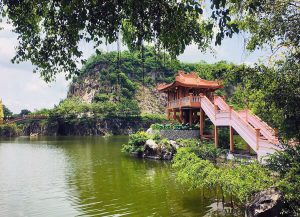 Sap Mountain is also known as Thoai Son and this is the largest mountain in the mountain cluster including: Sap mountain, Nho mountain, Ba mountain and Cau mountain. The mountain is 85m above sea level and has a circumference of about 3,800 m. The landscape embellished by human hands in harmony with nature. It is a home of vast, green rice fields surrounded by majestic mountains and clear blue water at the foot of the mountain. In the past, Sap Mountain had no lake, only when people exploited rocks and accidentally created a deep hole and an artificial lake at the foot of the mountain. Today, it is a tourist complex consisting of 2 clusters of Thoai Son picnic area and Thoai Ngoc Hau temple.
Sap Mountain is also known as Thoai Son and this is the largest mountain in the mountain cluster including: Sap mountain, Nho mountain, Ba mountain and Cau mountain. The mountain is 85m above sea level and has a circumference of about 3,800 m. The landscape embellished by human hands in harmony with nature. It is a home of vast, green rice fields surrounded by majestic mountains and clear blue water at the foot of the mountain. In the past, Sap Mountain had no lake, only when people exploited rocks and accidentally created a deep hole and an artificial lake at the foot of the mountain. Today, it is a tourist complex consisting of 2 clusters of Thoai Son picnic area and Thoai Ngoc Hau temple.
Cham cultural village
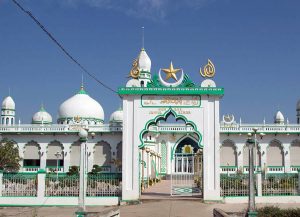
The Cham cultural village also know as Chau Giang Cham Village is situated on Phu Tan commune where meeting place of the two branches of the Tien river, the Hau river flows into Vietnam. This is one of the most famous Cham villages for their customs which follow Islam with many the strict of the official Islamic, created the identity of Cham culture in the Mekong Delta.
A typical architecture of the Cham is their wooden stilt house located on the rows of woods at the height of 2 or 3 meters completely use precious monolithic woods, roofed with palm leaves or tiles. Below the house is the room for loom storage or for common living. Each house usually has four rooms and a separate kitchen. The two front rooms are for receiving male guests while the two rear rooms are used for sleeping and receiving female guests. Between each room is a partition with a door and an intricately-embroidered curtain. At the Cham villages, you can buy many specialties from enjoy on the spot to take away, including fish noodle soup, Cambodian tea, banana cake and river fish. You can also admire the locals wear colorful sarongs and wrap their heads with big scarves.
Historical and cultural relics
Oc Eo relic area
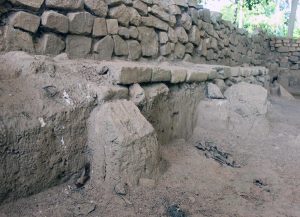
One of the most famous ancient relics in Mekong delta. Oc Eo relic site located in Oc Eo, Dinh My commune. This region has been identified as a rather bustling port town where the trade between Funan kingdom and neighboring countries such as Persia, China, India … Currently, this is not only a place for archaeologists to study Oc Eo culture but also an attractive tourist destination for domestic and foreign tourists to visit.
At Oc Eo relic area, visitors can see a lot of relics, precious relics, stone statues, bronze tools – stones, seals, glass-ceramic, lead, gold, vase, jar, sculptured reliefs, tiles … The Oc Eo relic area is a historical and cultural relics. And in 1998, it was recognized as a national monument.
Kien Giang Museum
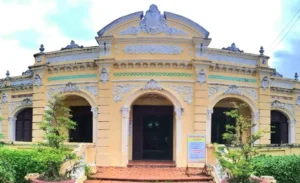 If you want to learn more about the culture and history of old Kien Giang, Kien Giang Museum in Rach Gia will be an ideal stop. With ancient French architecture combined with traditional Southern features, the museum preserves many valuable artifacts, introducing the history, people and culture of this land through 6 exhibition themes.
If you want to learn more about the culture and history of old Kien Giang, Kien Giang Museum in Rach Gia will be an ideal stop. With ancient French architecture combined with traditional Southern features, the museum preserves many valuable artifacts, introducing the history, people and culture of this land through 6 exhibition themes.
With only 15,000 VND entrance fee, you can spend the whole day exploring this space and learning about the glorious past of Kien Giang. This is not only a place to preserve heritage, but also a place where visitors can understand more deeply about the local cultural identity.
Nature & wildlife areas
U Minh Thuong National Park
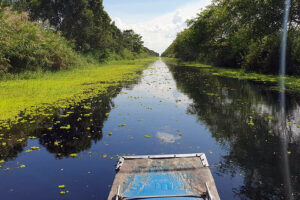 U Minh Thuong National Park is located in Vinh Hoa commune, about 65km southwest of Rach Gia. Formed and concentrated in the western part of the Ca Mau peninsula, bordered by mangrove forests along the Gulf of Thailand. U Minh Thuong is a typical type of wetland forest in South Vietnam. And even recognized on the list of unique and rare forests in the world.
U Minh Thuong National Park is located in Vinh Hoa commune, about 65km southwest of Rach Gia. Formed and concentrated in the western part of the Ca Mau peninsula, bordered by mangrove forests along the Gulf of Thailand. U Minh Thuong is a typical type of wetland forest in South Vietnam. And even recognized on the list of unique and rare forests in the world.
After weaving among the small canals by motorboat, visitors will have the opportunity to explore the bird sanctuary, visit Mang Doi through the high view from the watchtower.
Thach Dong Thon Van
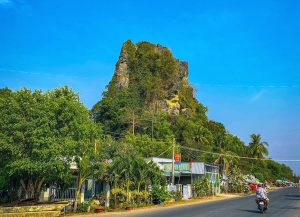 Thach Dong Thon Van, also known as Van Son, belongs to Ha Tien ward. It is a giant remnant of Pecmi limestone, standing tall with an altitude of about 90 meters above sea level and a foot diameter of only about 45 meters.
Thach Dong Thon Van, also known as Van Son, belongs to Ha Tien ward. It is a giant remnant of Pecmi limestone, standing tall with an altitude of about 90 meters above sea level and a foot diameter of only about 45 meters.
It is called Thach Dong Thon Van because every early morning, white clouds that fly over the top of the mountain are trapped in front of the cave and slowly fly in like a cave swallowing clouds. Located on Highway 80, about 3.5 km from Ha Tien ward, on the way from Ha Tien to Xa Xia border gate, this small mountain has the shape of a hat of geological heritage, virtual inside the stone tower with many stalactites with fancy shapes.
Markets
Floating Village in Chau Doc
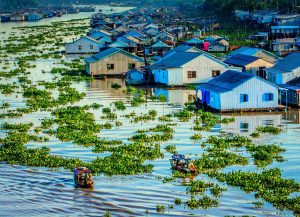
Situated 3 kilometers to the west of old Chau Doc city center, many floating houses with fish rafts nestled close together to form “villages”, stretching for several kilometers. The Chau Doc floating village is a freshwater fish farming village that was formed in the 60s of the last century. At first, there were only a few floating cages to raise fish in the natural way, without feeding because of good water. However, from the 70s onwards, due to high economic benefits, the number of fish cages has increased significantly and gradually became a key economic point of An Giang. Most of the fish cultured in the floating cages of the regions are catfish mainly for export to Western Europe and North America. The village is not only for people to live by fish farming but also an interesting destination that visitors come to learn and experience the rustic life of the people here. Manually feeding hundreds of fish below the floor of a house is a popular activity among visitors.
Long Xuyen Floating Market
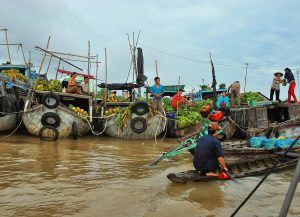 Located on the Hau River area, Long Xuyen floating market becomes a must-visit destination not to be missed when traveling to the Mekong Delta. The best time to visit Long Xuyen Floating Market is from 5 am. Not as busy as the Cai Rang or Cai Be floating market, the Long Xuyen floating market in An Giang province is considered one of the floating markets that still retain the most idyllic and primitive features. They wholesale agricultural products and fruits on board. Small traders will take small boats to buy and transport to wholesale and retail markets on the mainland. Similar to other floating markets, there are also a few boats serving breakfast, coffee, teas… You can try drinking coffee that is always boiled or enjoy local foods such as hearty crab soup noodle, stir-fried vermicelli right on floating boat.
Located on the Hau River area, Long Xuyen floating market becomes a must-visit destination not to be missed when traveling to the Mekong Delta. The best time to visit Long Xuyen Floating Market is from 5 am. Not as busy as the Cai Rang or Cai Be floating market, the Long Xuyen floating market in An Giang province is considered one of the floating markets that still retain the most idyllic and primitive features. They wholesale agricultural products and fruits on board. Small traders will take small boats to buy and transport to wholesale and retail markets on the mainland. Similar to other floating markets, there are also a few boats serving breakfast, coffee, teas… You can try drinking coffee that is always boiled or enjoy local foods such as hearty crab soup noodle, stir-fried vermicelli right on floating boat.
Speciality foods of An Giang
Coming to An Giang, visitors should not forget to enjoy specialties that are only delicious when eaten locally such as:
Herring Salad
This is a specialty of Phu Quoc, a dish that visitors should not miss when coming to this island. Herring salad is sold in all restaurants and eateries from high-end to popular.
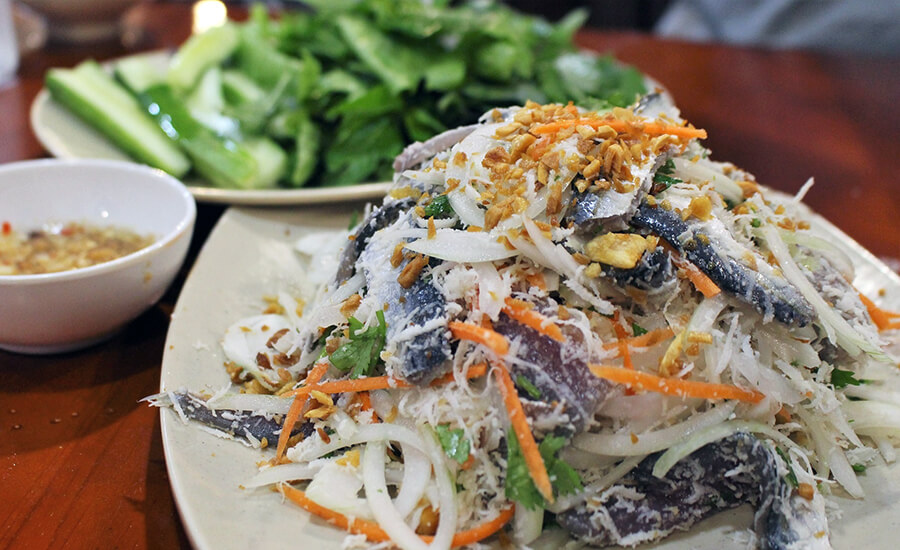
The herring is pre-processed, rolled with vegetables and rice paper, and dipped in fish sauce that has absolutely no fishy smell. The special thing about herring salad is that it is eaten with fresh melon, which makes it delicious and sweet. Visitors can also buy herring to bring back to the mainland as gifts.
Ham Ninh Crab
Crabs in Ham Ninh fishing village are famous for their freshness and sweet, firm meat. According to suggestions from travel sites, Ham Ninh crab is in the top 3 seafood dishes that tourists “cannot miss” when enjoying the cuisine of the pearl island.
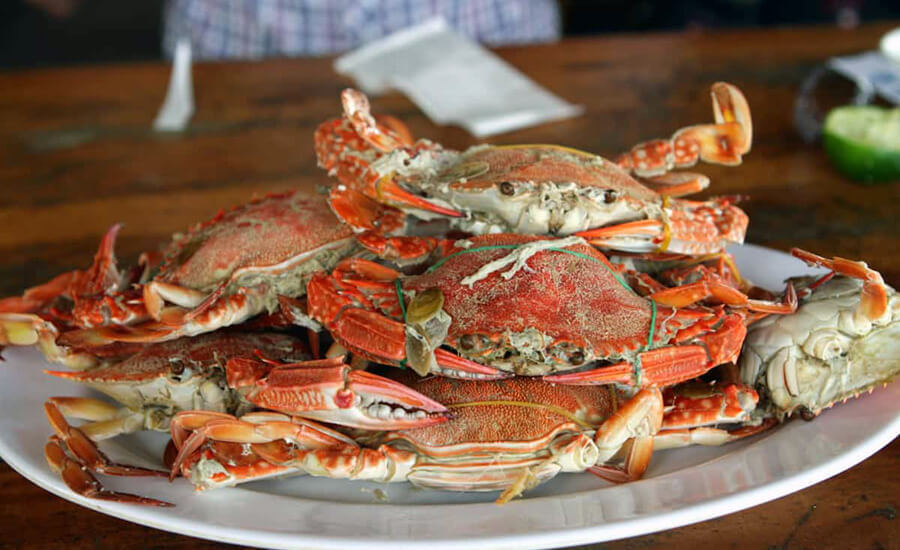
Keywords related to Ham Ninh crab often increase during the summer tourist season – when crabs are in season and many customers look for delicious crab restaurants.
Sea Urchin
Grilled sea urchin with scallion oil or porridge is also a unique dish that many people hunt for. This is a seafood specialty that is sought after at Phu Quoc night food markets.
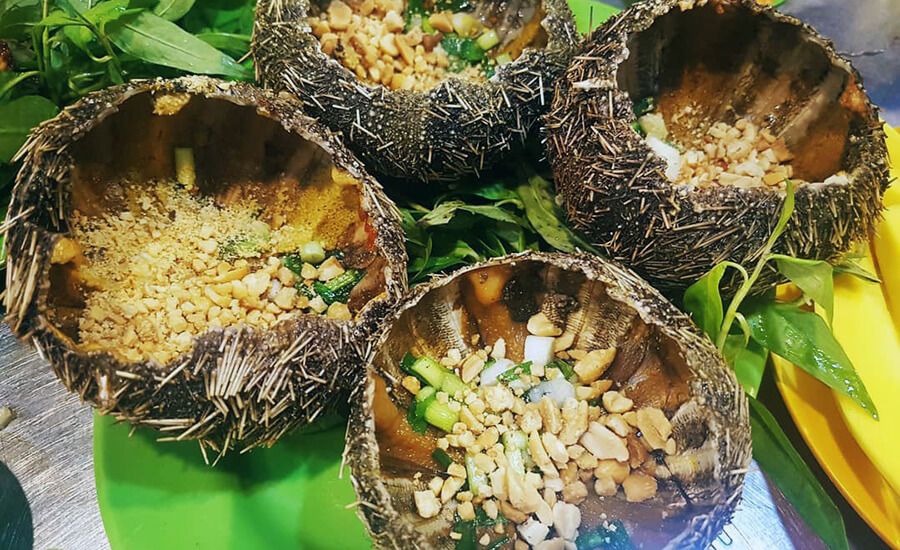
The fatty grilled sea urchin dish often attracts curious tourists, causing searches for “ sea urchin” to increase every time a review or experience vlog goes viral.
Ken noodle
Ken noodle is a Khmer dish with the main ingredients being typical fish of the Western region which are carefully processed, skinned, and deboned. The dish has a thick, red broth made from coconut milk.
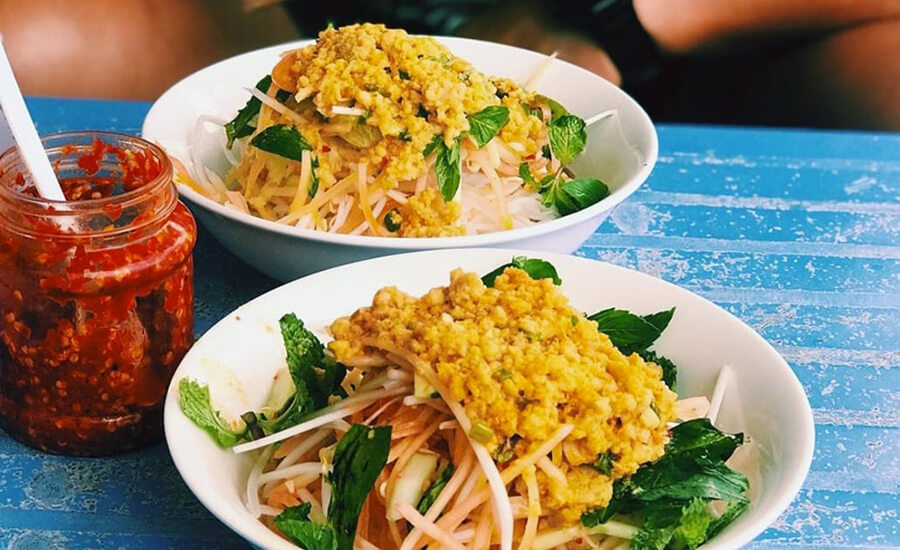
To have a perfect bowl of Ken noodle, just add a little mango, raw vegetables, crushed dried shrimp, and then pour in the broth. When eating, diners will feel the fatty taste of coconut milk and the sweet taste of fish..
Phu Quoc fish sauce
Phu Quoc fish sauce is a famous specialty of Phu Quoc Island, produced from fresh anchovies and sea salt using traditional methods.
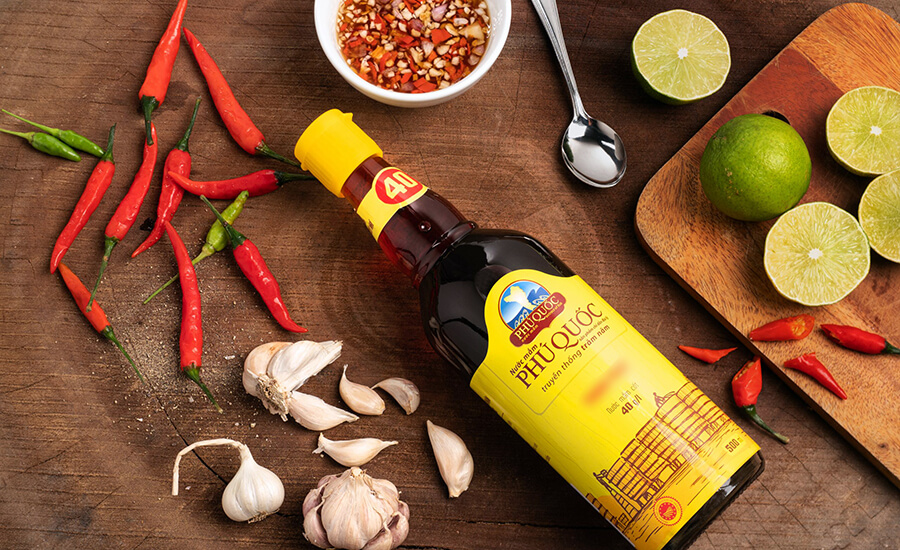
The fermentation process lasts from 6 to 12 months in large wooden barrels, creating a rich flavor and characteristic amber color. Phu Quoc fish sauce is not only a typical spice of Vietnamese cuisine but also a meaningful gift when traveling to Phu Quoc.
During the flood season, field vegetables are considered a specialty of An Giang, including water lilies, sesbania flowers, chives and spinach… These vegetables are often cooked in sour soup, dipped in hot pot or eaten raw with braised fish sauce, braised fish…
Vietdreamtravel also provides package tours and visa services to explore An Giang. Do not hesitate to contact us for any requirements.
Source: Collected by An
